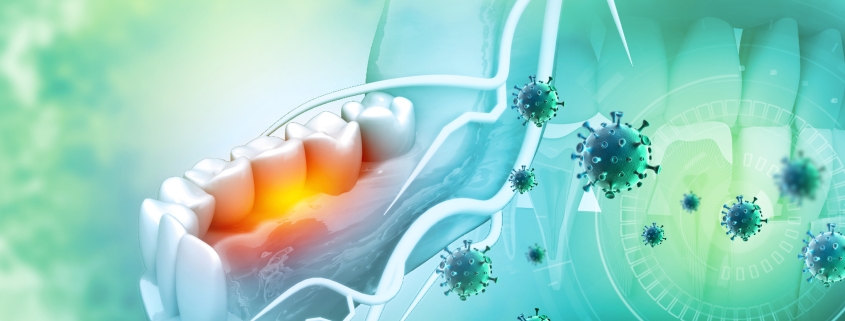The Importance of Oral Cancer Screening
Oral cancer is a significant public health issue that affects thousands of individuals worldwide. Despite advances in medical technology and treatment options, the prognosis for oral cancer remains heavily dependent on early detection. Oral cancer screening plays a crucial role in identifying the disease at its earliest and most treatable stages. This article explores the importance of oral cancer screening, the screening process, and the benefits of early detection.
Oral Cancer
Oral cancer refers to cancers that occur in the mouth and throat, including the lips, tongue, cheeks, floor of the mouth, hard and soft palate, sinuses, and pharynx. The most common type of oral cancer is squamous cell carcinoma, which accounts for over 90% of cases.
Risk Factors
Several risk factors increase the likelihood of developing oral cancer, including:
Tobacco Use:
Smoking cigarettes, cigars, or pipes, as well as using smokeless tobacco, significantly increases the risk of oral cancer.
Alcohol Consumption:
Heavy alcohol use is a major risk factor, particularly when combined with tobacco use.
Human Papillomavirus (HPV): Certain strains of HPV, especially HPV-16, are linked to oral cancers.
Sun Exposure:
Prolonged exposure to the sun can increase the risk of lip cancer.
Age and Gender:
Oral cancer is more common in individuals over 40 and is twice as prevalent in men compared to women.
Diet:
A diet low in fruits and vegetables can contribute to the risk of developing oral cancer.
The Importance of Oral Cancer Screening
Early Detection and Improved Outcomes
Early detection of oral cancer is crucial because it significantly improves the chances of successful treatment and survival. When oral cancer is diagnosed at an early stage, the five-year survival rate is around 84%. However, if the cancer has spread to nearby tissues or lymph nodes, the survival rate drops to 66%, and it further decreases to 39% if the cancer has metastasized to distant parts of the body.
Reducing Morbidity
In addition to improving survival rates, early detection can also reduce the morbidity associated with oral cancer treatment. Early-stage cancers may require less aggressive treatments, resulting in fewer side effects and a better quality of life for patients.
Cost-Effectiveness
Screening for oral cancer is a cost-effective approach to healthcare. Detecting cancer at an early stage can reduce the need for extensive treatments, hospitalizations, and surgeries, ultimately lowering healthcare costs.
The Oral Cancer Screening Process
Oral cancer screening is a simple, quick, and non-invasive process that can be performed during a routine dental check-up. The screening typically involves:
Visual Examination:
The dentist or healthcare provider will inspect the mouth, throat, and surrounding areas for any abnormalities such as red or white patches, sores, or lumps.
Palpation:
The provider will feel the tissues in the mouth and neck for any unusual masses or nodules.
Use of Specialized Tools:
In some cases, specialized tools like a VELscope or a brush biopsy may be used to identify suspicious areas that are not visible to the naked eye. These tools can help detect changes in the tissues that may indicate cancerous or precancerous conditions.
Signs and Symptoms
Patients should also be aware of the signs and symptoms of oral cancer and seek professional evaluation if they experience:
Persistent sores that do not heal within two weeks
Unexplained bleeding in the mouth
Lumps or thickening of tissues in the mouth or neck
Difficulty swallowing or chewing
Chronic sore throat or hoarseness
Numbness or pain in any area of the mouth
Who Should Get Screened?
Oral cancer screening is recommended for everyone, especially those at higher risk. Individuals over 40, tobacco and alcohol users, and those with a history of significant sun exposure or HPV infection should be particularly vigilant about regular screenings.
Benefits of Regular Screening
Regular oral cancer screenings provide several benefits:
Peace of Mind:
Knowing that you are regularly screened can provide reassurance and peace of mind.
Timely Intervention:
Regular screenings increase the likelihood of detecting cancer early, allowing for timely intervention and treatment.
Prevention:
Screenings can also help identify precancerous conditions, enabling preventive measures to be taken before cancer develops.
Conclusion
Oral cancer screening is a vital component of preventive healthcare that can save lives through early detection and timely intervention. Given the high morbidity and mortality rates associated with late-stage oral cancer, regular screenings are essential, particularly for those at increased risk. By incorporating oral cancer screening into routine dental check-ups, healthcare providers can play a crucial role in reducing the impact of this serious disease. Patients should be proactive in seeking regular screenings and staying informed about the signs and symptoms of oral cancer to ensure the best possible outcomes.

